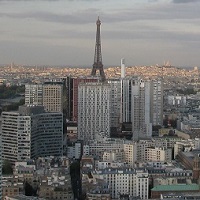
One doesn’t usually think of this low dense city having much in the way of a skyline, but Paris is now in the well advanced planning stages for the most significant changes to the city’s architectural profile in 40 years. Not to worry, changes in the beloved Saint-German Quarter will be limited to a Dior for a Vuitton, a Weston for a Jordan, a napoleon for a macaroon, while the Marais will simply continue its inexorable march toward Starbucks, burgers, bagels and boutiques, with a few falafel stands and gay bars maintained for local color.
No, it’s on the edges of the city that Paris is mutating, with accelerated changes due to arrive over the next 15 years. The most marked of these mutations, if Paris City Hall gets its way, would be the construction of a ring of towers around the city, placing the French capital, in the shadow, both literally and figuratively, of high-rises and skyscrapers (mini skyscrapers to start) as never before.
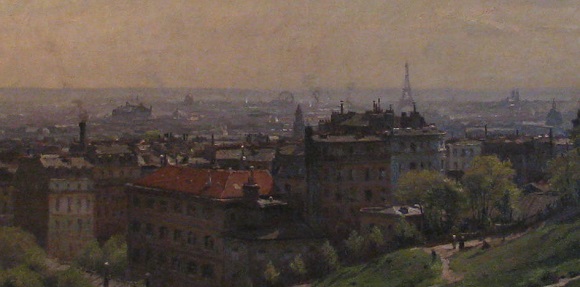
Gustave Eiffel’s tower, completed in 1889 and at 312 meters (1034 feet) then the highest monument in the world, may be the grandfather of skyscrapers, but Paris otherwise kept its head down until the 1960s. While the authorized height limit within Paris remained 37 meters (about 8 stories) or less in some areas, permission was giving in the late 1960s and early 1970s to build a spate of high-rise towers on inner edges of the city, notably in the 13th arrondissement (Olympiades) and the 15th arrondissement (Front de Seine).
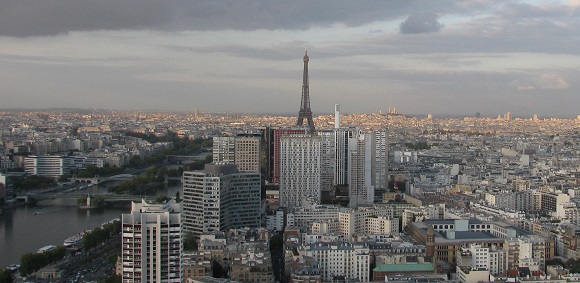
But it was the Montparnasse Tower that truly challenged the vision of what the skyline of Paris could be when it rose far beyond the standard height and well within the city limits. Inaugurated in 1973, it stands 210 meters (689 feet) high, two-thirds the height of the Eiffel Tower; it’s a foreboding sight from most angles but it does offer a spectacular 360 degree view from its rooftop. After that, Paris again shied away from towers and instead watched contentedly as business (and some residential) towers took shape at a safe suburban distance to the west at La Defense.
In the past 30 years, the debates about new constructions have largely centered around public projects: Buren’s Columns in the mid-1980s and I.M. Pei’s (and President Francois Mitterand’s) Pyramid of the Louvre in the late 1980s were quickly followed by the pharaonic assault of the BNF National Library, another Mitterand project which opened in 1998, and the Quai Branly Museum, President Jacques Chirac’s lovechild born ugly as sin in 2006 but discrete behind its greenery. Like them or not, those were all national constructions designed with culture and national (as well as presidential) pride in mind.
Plans are now underway for the construction of towers around the inner edge of the capital. The towers as currently imagined would max out at 180 meters (590 feet), small by skyscraper standards but nevertheless a dramatic change of the skyline of the city. In conceiving them, there is no longer any pretense of cultural or even national pride but rather, according to those in favor of the new towers, of economic development and a certain kind of height-inspired prestige. Paris, for all its tourist appeal and its one-upmanship in terms of food, drink, art and all that is urban luxury, remains a city concerned with housing, office space, economic development, and noise and air pollution—in short, with growth and well-being.
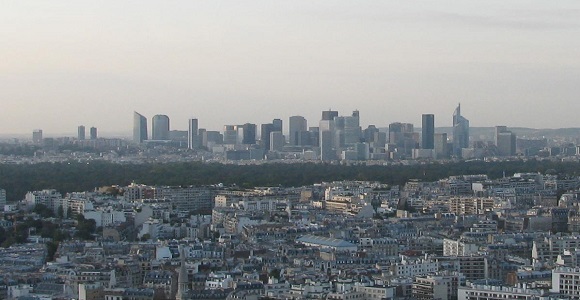
Mayor Bertrand Delanoë (Socialist Party) is full steam ahead regarding the towers, and should the current detract his plans then the 2014 mayoral race in Paris will undoubtedly set for years to come the city’s direction in the construction of towers, with the Socialist Party leading the charge for the construction of towers and the conservative party (UMP) not so sure—or at least preferring to have their own friends in on the deal. (It’s likely, however, that, both major parties cavort with the builders and developers.)
Towers have been on the mayor’s agenda for the past decade. A major step toward their construction was taken in 2010 the City of Paris raised the authorized limit in certain sectors to 50 meters (164 feet, about 11 stories) for apartment buildings and has been flirting with developers for projects for office towers or mixed-use towers of up to 180 meters (590 feet). The first of the new towers benefiting from the new height limit will begin casting their shadows over the next few years.
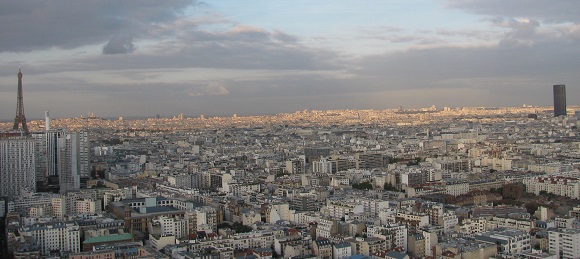
Now comes plans for the Triangle Building, a 180-meter pyramid designed by the Swiss firm of Herzog & de Meuron (Tate Modern of London, Beijing National Stadium, M.H. de Young Memorial Museum of San Francisco, etc.), whose construction City Hall has been pushing for on the southwestern edge of the city near the Parc des Expositions exhibition complex in the 15th arrondissement. (The architects’ visions of the planned towers can be seen here.)
They mayor’s office has for several years now been arguing for the need for the likes of the Triangle Tower and other high rises along the periphery of the capital, claiming that the economic development, competitiveness and very prestige of the capital are at stake. The yea-sayers allege that refusing the solution of height would mummify Paris. Of the Triangle Tower itself, Mayor Delanoë has said that its profile would not only not disturb the city but would “improve both the beauty and the urbanism of Paris” and the neighboring suburbs of Vanves and Issy-les-Moulineaux.
Yet opposition runs strong, arguing that Triangle Tower in particular is economically unsound, contrary to the public interest, harmful to its neighborhood and visual nuisance.
Seeking to show the point of view of those opposed to the Triangle Tower and, more generally, to the eventuality of a ring of towers around the city, France Revisited offered associations in opposition to the project a tribune to present their views to our foreign readership. Patrice Maire, president of the association Monts 14, itself a part of the Collective Against the Triangle Tower, stepped up to the plate. Read that opinion on the construction of the Triangle Tower here.
© 2013, Gary Lee Kraut


Wonderful article, Gary! Thanks for your support to what remains one of our main battles against the city planners who want to make Paris a run-of-the-mill city with run-of-the-mill skyscrapers all over the damn place.
Cheers, Jan Wyers